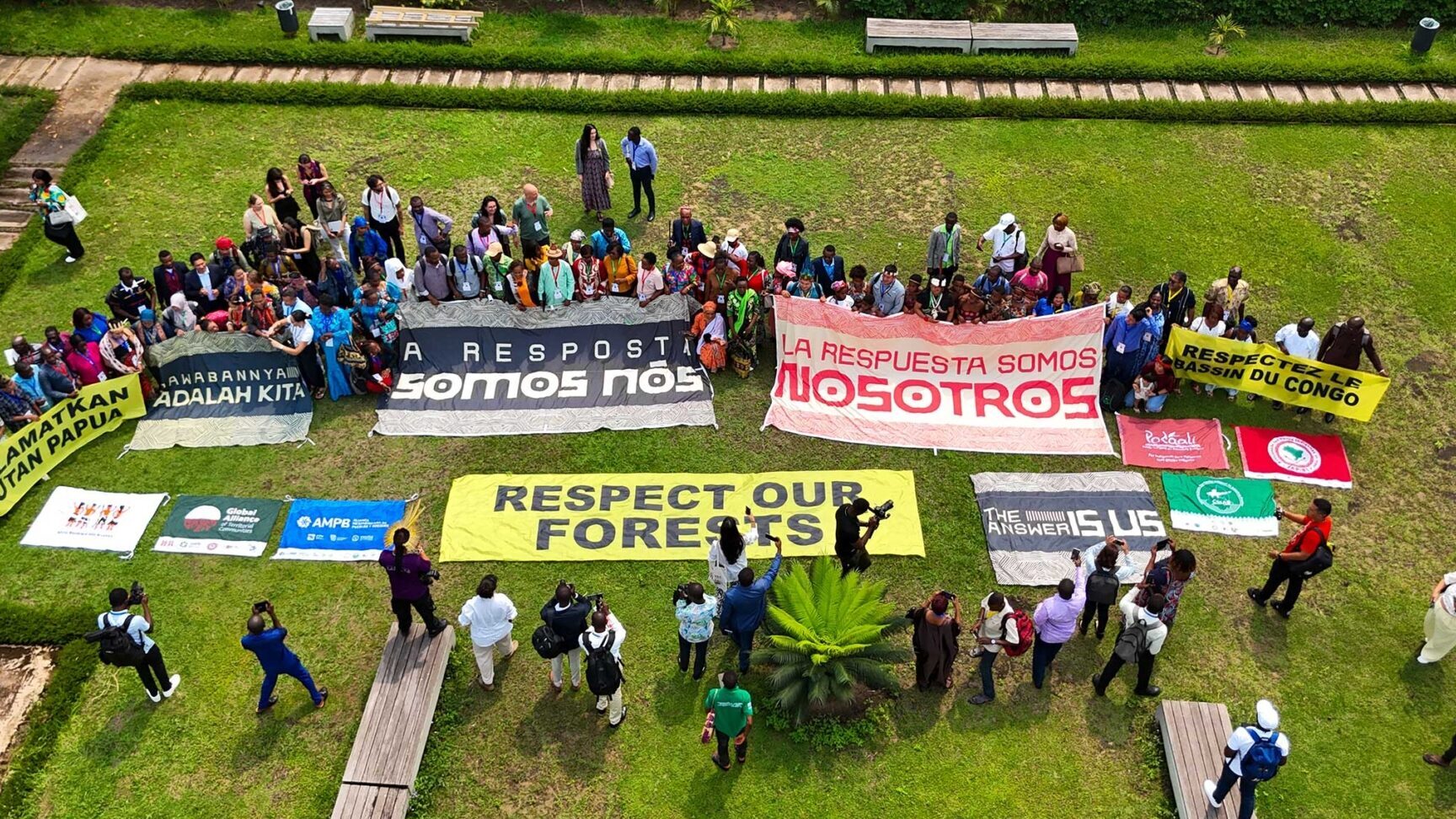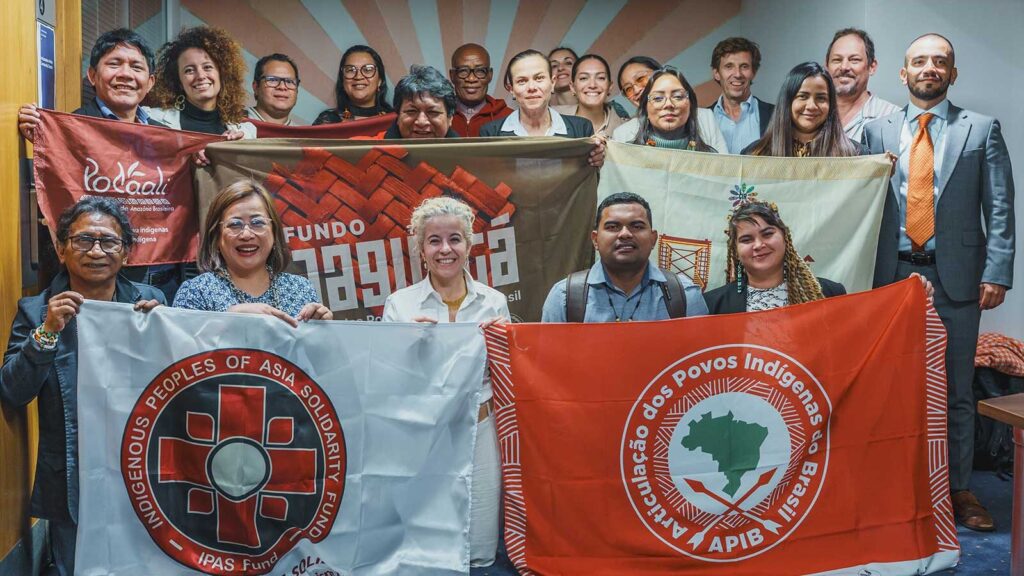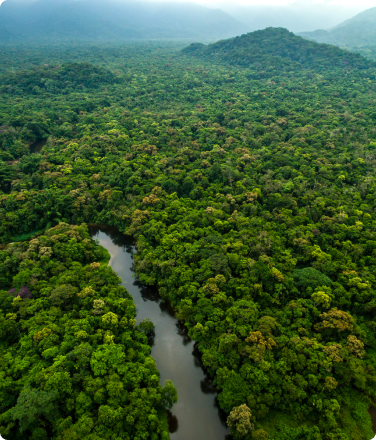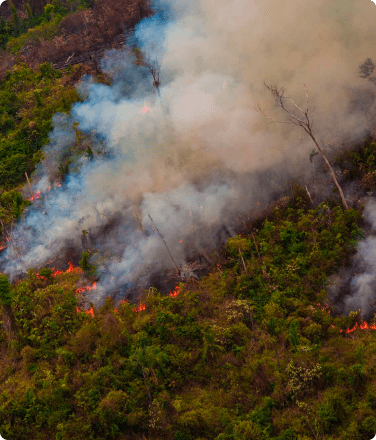- The Tropical Forests Forever Facility (TFFF) will be a central topic at COP30, proposing a new global mechanism for long-term forest finance.
- Indigenous peoples and local communities, through the GATC, helped co-design the proposal to ensure fair and direct access to climate funds.
- RFUS continues to support these efforts, advocating for the strengthening of Indigenous-led funds and direct-access models across the Amazon and Mesoamerica.
As world leaders prepare to gather in Belém, Brazil, for COP30 in November, one topic is expected to take center stage: the Tropical Forests Forever Facility (TFFF)—an ambitious proposal from the Brazilian government to create a lasting financial mechanism for forest protection.
The TFFF aims to provide countries with steady, long-term payments for proven forest protection results, moving beyond annual donor pledges toward a self-sustaining system. Its model combines about US$25 billion in public funding with US$100 billion in private investment raised through the sale of bonds—financial instruments similar to long-term loans. The proceeds would be reinvested in emerging-market assets, and the profits generated each year would be used to reward countries that maintain their forests, with payments estimated at around US$4 per hectare of conserved forest.
It’s an elegant concept, though the devil is in the details. There is still a healthy debate between civil society, Indigenous forest peoples, and governments around fundamental questions: What exactly constitutes a forest? How should degradation be measured? What governance structures and safeguards are needed? And how will the financial model actually work in practice?
Behind these discussions lies a shared concern: existing climate finance mechanisms have failed to deliver the scale or reliability of support needed to keep tropical forests intact. Too often, they rely on short-term projects and voluntary pledges, leaving Indigenous peoples, local communities, and forest nations without the consistent resources required to protect their territories.
Co-designing the TFFF with Indigenous Peoples and Local Communities
When the Brazilian government began developing the TFFF, with support from the Ministry of Indigenous Affairs, it took an unprecedented step: inviting the Global Alliance of Territorial Communities (GATC) to help design the mechanism. The intent was to ensure that at least 20% of the TFFF’s results-based payments would go directly to Indigenous peoples and local communities—not only through government-managed programs but through funds and institutions led by the communities themselves.
The GATC saw this invitation as an opportunity to turn long-standing demands into policy: redirecting climate finance to the territories that protect most of the world’s biodiversity, and making these funds more just, inclusive, and effective.
Between March and July 2025, the alliance coordinated a series of meetings that brought together Indigenous and local community networks from across the tropical belt. This global co-design process created a Global Steering Committee, held discussions in New York, Washington, D.C., and Brazzaville, and involved more than 400 Indigenous and local community leaders. The group worked closely with the World Bank, the Government of Brazil, and the TFFF Secretariat to define key principles for how resources would flow and be governed.
The process led to concrete commitments: the TFFF now requires that a portion of every participating country’s payments be managed by Indigenous- and community-led institutions. It also includes mechanisms for accountability and culturally appropriate monitoring, helping ensure that financing truly supports those who live in and care for forest territories.
We want to play a leading role in strengthening the governance and management mechanisms of funds for Indigenous peoples and local communities. The TFFF opens an opportunity for more democratic relations between governments and forest peoples, but everything new, especially on this scale, also brings uncertainty. It’s essential that we build trust and ensure that resources truly reach those on the ground.
– Kleber Karipuna, Co-Chair of GATC and Executive Coordinator of the Articulation of Indigenous Peoples of Brazil (APIB)

Progress and Remaining Challenges
The co-design process resulted in meaningful advances in how the TFFF recognizes and integrates Indigenous leadership. For the first time, Indigenous peoples and local communities will have a formal role in guiding and overseeing how climate finance reaches the ground—a structural shift that reflects years of collective advocacy.
Yet critical gaps remain. Indigenous representatives were not granted voting rights on the TFFF’s main boards, limiting their influence over final decisions. The current design also lacks adequate technical assistance for national steering committees and executing agencies—a gap that could undermine both the effectiveness and sustainability of the mechanism.
Together, these unresolved issues highlight a broader challenge: building climate finance systems that move beyond recognition toward genuine power sharing, where Indigenous-led institutions have both the capacity and authority to manage the resources needed to protect their territories.
We must ensure that the TFFF delivers on its promise, with inclusive steering committees, legitimate implementing agencies, and culturally appropriate monitoring mechanisms. We call on our allies to support national dialogues led by Indigenous peoples and local communities, and to ensure that no TFFF resources are directed toward extractive activities that harm our territories.
– Global Alliance of Territorial Communities (GATC) in a September statement.
The Role of Rainforest Foundation US
Since 2019, Rainforest Foundation US (RFUS) has served as the fiscal sponsor of GATC, overseeing finance and accounting, fundraising, and donor relations. But our collaboration extends far beyond administrative support. RFUS shares the GATC’s vision and has integrated its mission and priorities into our strategic plan.
Throughout this period, RFUS has supported the GATC’s global policy engagement on climate finance, its institutional strengthening, and its participation in key international forums. When the Brazilian government invited the GATC to co-design the TFFF, RFUS contributed staff expertise and logistical support to help facilitate the process and ensure the alliance’s leadership could engage effectively in the negotiations.
Our engagement in the TFFF is guided by a simple goal: to make climate finance more predictable, equitable, and accessible for Indigenous peoples and local communities. We see mechanisms like the TFFF as a step toward building stronger community-led and territorial funds—an essential foundation for a fairer and more effective global climate finance system.
– Joshua Lichtenstein, Policy Director at Rainforest Foundation US

The Path Ahead
Many steps remain before the TFFF becomes operational. Donor countries must invest substantial funding, the private sector must participate, and tropical forest nations must meet the necessary criteria related to forest area and deforestation levels.
For the direct allocation of finance to Indigenous peoples and local communities, each country will need to establish dedicated national bank accounts, create legitimate and inclusive steering committees, and select executing agencies. Once the mechanism is up and running, it will need to demonstrate that it can generate sustained returns—and that governments will honor their commitments to protect forests.
The TFFF establishes two possible pathways for the direct allocation of finance to Indigenous peoples and local communities. The first, the direct-access model, allows resources to flow through Indigenous and community-led institutions, giving them a stronger role in decision-making and accountability. The second, channeled through government agencies, risks reproducing the same barriers that have long prevented climate finance from reaching those who protect forests on the ground: bureaucracy, political interference, and lack of transparency.
Because each country will decide which approach to adopt, advocacy from Indigenous organizations and social movements will be essential to ensure that governments choose the direct-access model.
RFUS will continue to support the GATC and its member organizations as they navigate this next phase. Across the Amazon and Mesoamerica, we will focus on strengthening Indigenous-led funds and national processes that make direct access possible, ensuring that those standing on the frontlines of forest protection have the resources and agency to do so effectively.
Learn more about Indigenous-led rainforest protection and keep up with the latest developments in our work by signing up for our email list today.



